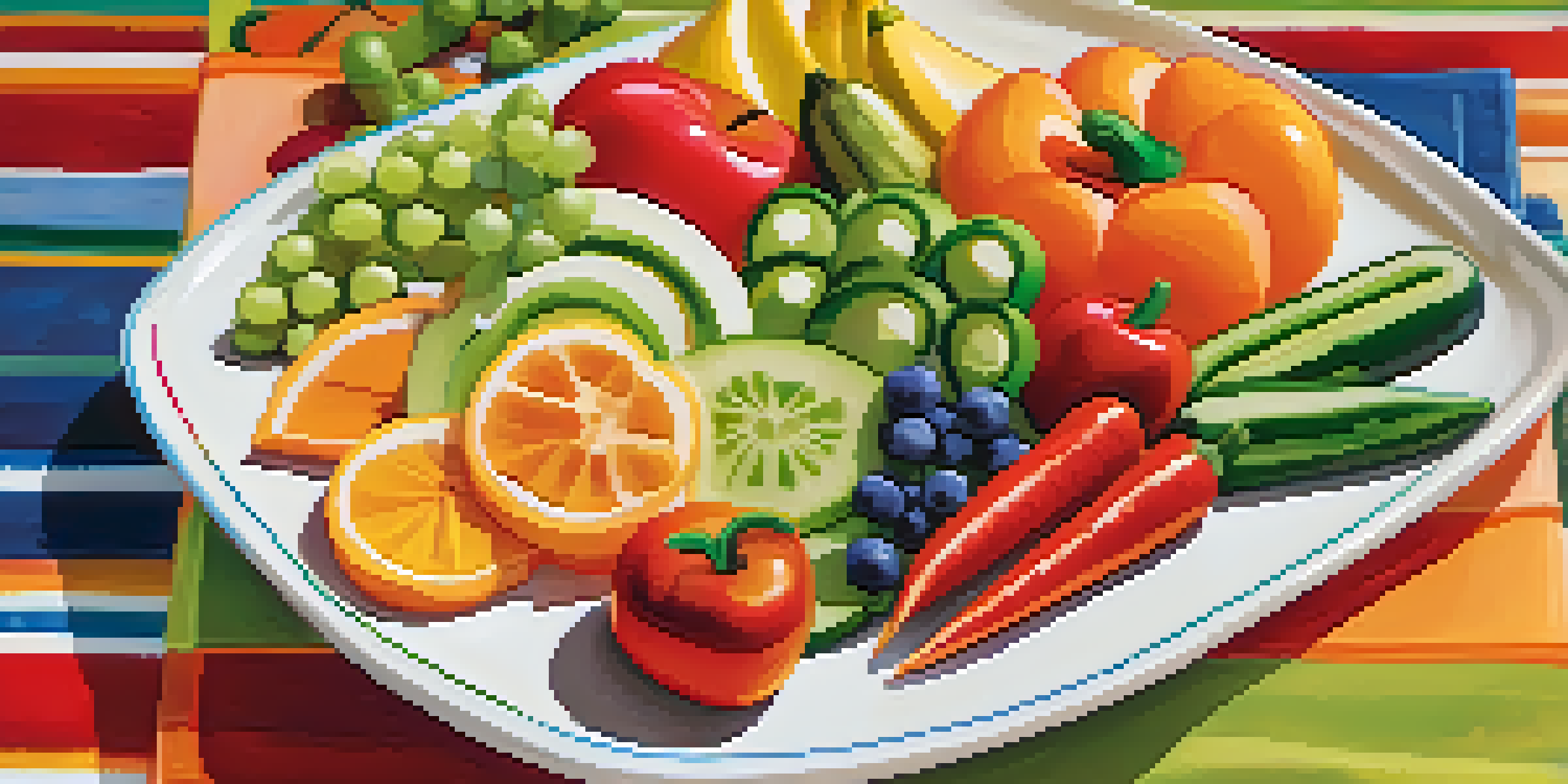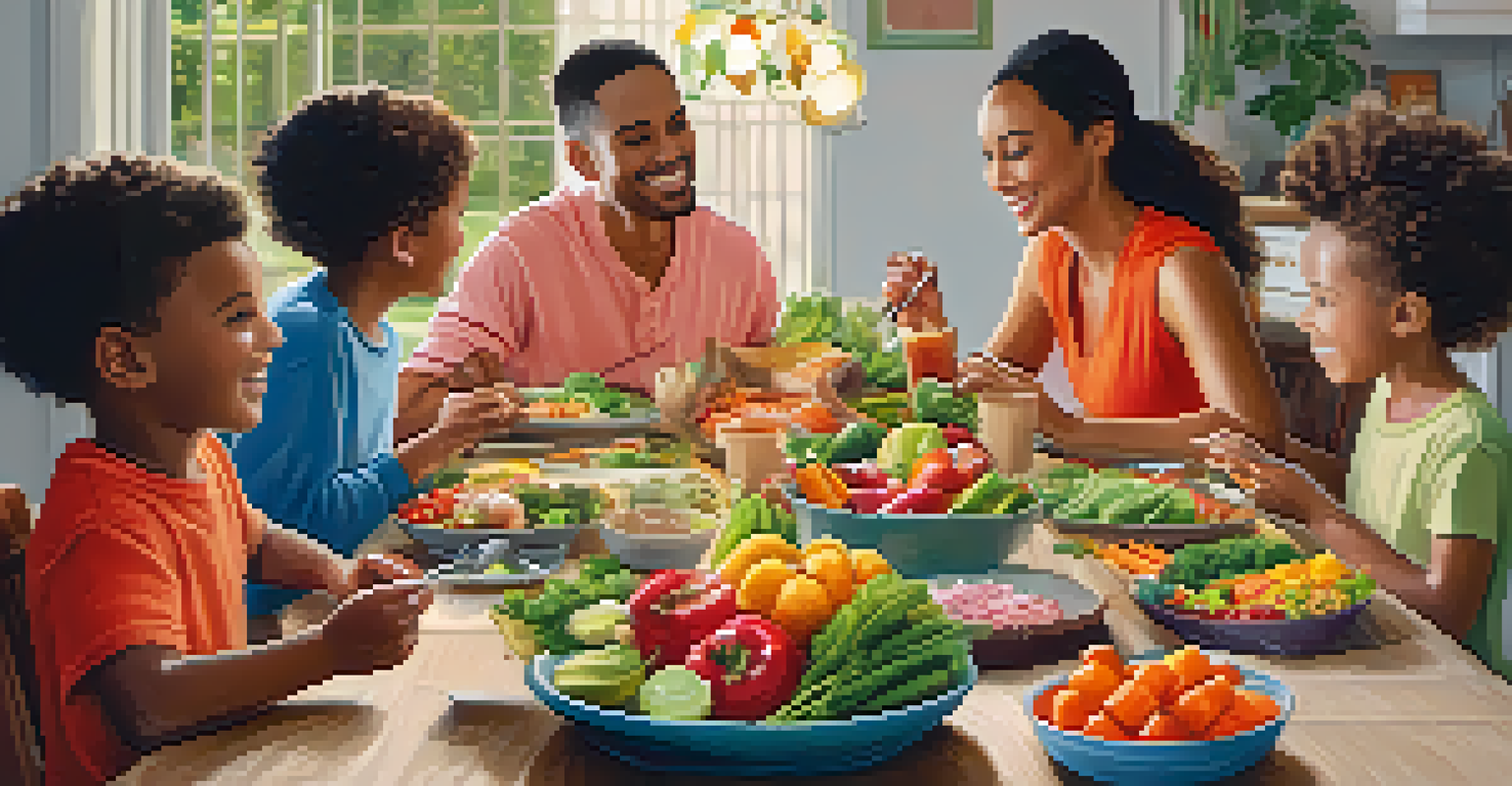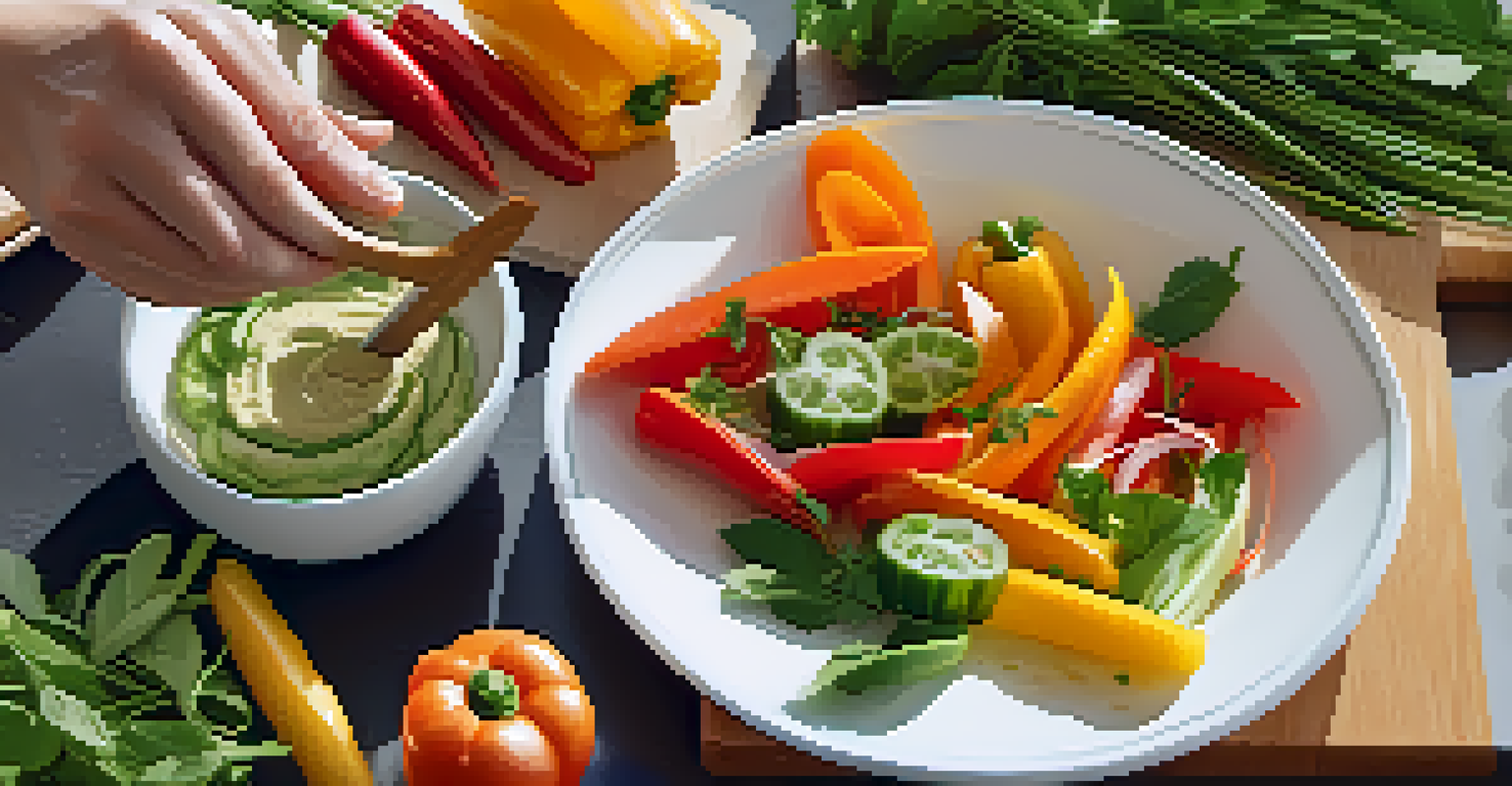How to Introduce Raw Foods to Your Kids' Diet Gradually

Understanding the Benefits of Raw Foods for Kids
Raw foods are packed with nutrients that can boost your child's health. Fruits and vegetables, when consumed raw, retain more vitamins and minerals compared to cooked versions. This means your kids get a higher dose of essential nutrients that support growth and development.
Let food be thy medicine and medicine be thy food.
In addition to their nutritional benefits, raw foods can also promote better digestion. The fiber found in raw fruits and veggies helps to keep the digestive system running smoothly, which is crucial for kids who are still developing their eating habits. Think of it as giving their tummies a gentle, healthy workout.
Finally, introducing raw foods lays the foundation for healthier eating habits later in life. By familiarizing your children with a variety of fresh, uncooked foods now, you encourage them to appreciate and make healthier choices as they grow older.
Start with Familiar Raw Options Your Kids Already Love
Begin by introducing raw foods that your kids are already familiar with. For example, if they love apple slices or carrot sticks, these are great starting points. Their existing fondness for these foods will make the transition smoother, as they won't feel overwhelmed by new tastes.

Next, consider incorporating raw dips to make the experience even more enjoyable. Pairing raw veggies with hummus or yogurt can add flavor and appeal, turning healthy snacking into a fun activity. This way, your kids will associate raw foods with positive experiences.
Raw Foods Boost Kids' Health
Raw foods provide essential nutrients that support children's growth and development.
By starting with familiar foods, you create a positive foundation for expanding their raw food palate. Once they are comfortable with these options, you can gradually introduce more adventurous choices like bell peppers, cucumbers, or even raw zucchini noodles.
Make Raw Foods Fun with Creative Presentation
Kids are often more willing to try new foods when they are presented in fun and engaging ways. Use cookie cutters to create fun shapes from fruits and vegetables, or arrange them into colorful patterns on their plates. Making food visually appealing can spark curiosity and excitement.
Eating raw food is a lifestyle choice that can lead to a healthier, more energetic life.
You can also involve your kids in the preparation process. Let them help wash, peel, or arrange the raw foods. This hands-on approach not only teaches them about healthy eating but also fosters a sense of ownership over their meals, making them more likely to enjoy what they’ve helped create.
Lastly, consider themed food days, like 'Rainbow Day' where you serve a variety of colorful raw fruits and vegetables. This playful approach makes healthy eating a part of their daily fun, rather than a chore.
Introduce Raw Foods Gradually to Avoid Overwhelm
Transitioning to a diet that includes raw foods should be a gradual process. Start by replacing one cooked meal a week with a raw option. This slow integration allows your kids to adjust without feeling pressured to change their eating habits all at once.
As they become more accustomed to the flavors and textures of raw foods, you can increase the frequency. Remember, patience is key here; some children may need more time than others to embrace these changes.
Make Raw Foods Fun and Engaging
Creative presentations and involving kids in preparation can spark their interest in raw foods.
By taking it slow, you help your kids build a positive association with raw foods, making them more likely to choose these options on their own in the future.
Explore a Variety of Raw Foods Beyond Fruits and Vegetables
Raw foods aren’t limited to just fruits and vegetables; there are plenty of other options to explore. Nuts, seeds, and sprouted grains are excellent additions that provide healthy fats and protein. They can be great snacks or toppings for salads and smoothies.
In addition, consider introducing raw dairy products like yogurt or cheese, if your family consumes dairy. These can be delicious ways to incorporate raw foods while adding variety to your kids' diet.
Lastly, don't forget about raw snacks! Items like energy balls made from dates and nuts or raw granola bars can be fun treats that your kids will love, making healthy eating feel less restrictive.
Encourage Family Meals Featuring Raw Foods Together
Sharing meals as a family creates a supportive environment for trying new foods. Set aside time for family meals where raw foods are included, allowing everyone to enjoy the benefits together. This not only encourages your kids to try new items but also fosters family bonding.
During these meals, discuss the benefits of raw foods in a casual and engaging way. Share fun facts or stories about how certain foods grow or where they come from. This approach not only educates but also cultivates curiosity about their food.
Gradual Introduction for Success
Slowly integrating raw foods into meals helps children adjust and builds positive associations.
By making raw foods a regular part of family meals, you reinforce their importance and normalize their presence in your kids' diets, making them more likely to embrace these healthy options.
Be a Role Model: Show Your Kids How to Enjoy Raw Foods
Kids often emulate their parents, so it’s essential to model healthy eating habits. Make sure you are enjoying raw foods alongside them, demonstrating that you also appreciate these nutritious options. Your enthusiasm can be contagious, encouraging them to try things they might otherwise ignore.
Talk about your favorite raw foods and how you like to enjoy them. This dialogue can spark interest and excitement, making it easier for your kids to feel comfortable with what they’re eating.

Remember, the more you demonstrate enjoyment and curiosity about raw foods, the more likely your kids will be to follow suit, creating a positive cycle of healthy eating in your family.